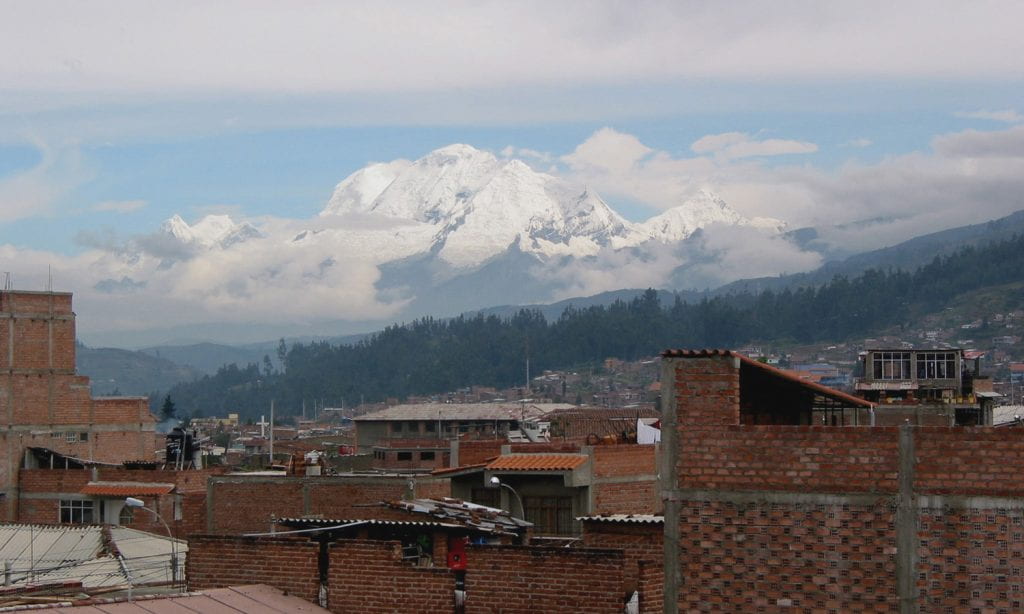Cordillera Blanca, Peru
No mountain range on Earth has unleashed such catastrophic glacier disasters as Peru’s Cordillera Blanca range. The 1941 glacial lake outburst flood from Lake Palcacocha killed nearly 2,000 people and destroyed one-third of the city of Huaraz, the capital city of this Ancash Region. Then, in 1970, a massive earthquake triggered a glacier landslide/avalanche from Peru’s highest peak, Mount Huascaran, killing perhaps 6,000 people. These are only the most extreme examples, as dozens of other smaller outburst floods and landslides have occurred over the last century in the Cordillera Blanca.
Yet Peruvians have adapted to these glacier hazards. They pioneered a way to partially drain and dam dangerous glacial lakes, which has protected communities and prevented many disasters. They have monitored and studied their glaciers and glacial lakes for decades. The Unidad de Glaciología y Recursos Hídricos has continued since 1951 to monitor Cordillera Blanca and other Peruvian glaciers. More recently, the Peruvian government established the Instituto Nacional de Investigacion en Glaciares y Ecosistemas de Montana (INAIGEM) to study high-mountain glaciers and ecosystems in the Cordillera Blanca and throughout the country.
And yet much more needs to be done as existing glacial lakes, such as Lake Palcacocha, remains a threat to tens of thousands of people living downstream. Here at Palcacocha and in nearby Huaraz, the issue has become contentious enough that one local resident, Saúl Luciano Lliuya, is suing the German energy company RWE to help pay for disaster prevention work at the unstable glacial lake. The lawsuit is still ongoing, and it demonstrates the ways in which climate change has global consequences, the ways that glacier retreat affect real people through loss and damage, how an ethics of responsibility is playing out in both governments and the court system, and how responses to ice loss in mountain ranges are diverse and far-reaching given the many ways glaciers affect societies.
Today hundreds of thousands of people live in and around the Cordillera Blanca mountains — and many more depend on water from Cordillera Blanca glaciers. The ice, after all, provides water not only for highland communities but also for coastal hydropower generation and large-scale irrigation projects, such as Chavimochic and Chinecas.
Of course water is not abundant, particularly in the dry season, and conflicts over the management of glacial lakes and glacier-fed rivers have emerged in recent years. These are ongoing problems.
